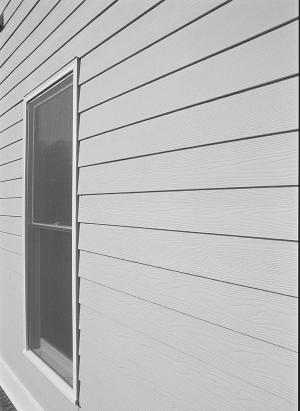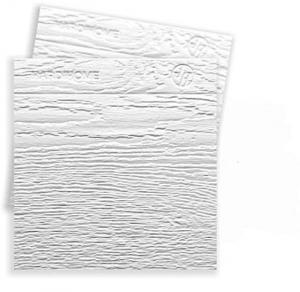2001 - Volume #25, Issue #5, Page #30
[ Sample Stories From This Issue | List of All Stories In This Issue | Print this story
| Read this issue]
"Cement" Siding Looks Like Wood, Wears Like Concrete
 |
 |
The product is fiber cement siding, and it's made of a mixture of Portland cement, sand, cellulose and water.
Alan Forrer is communications manager with Cemplank, one of the three main companies manufacturing and marketing fiber-cement siding in the U.S. He says this type of siding has been used around the world for decades, but has been available in the U.S. for only about 10 years and is not well-known. Cemplank's main competitors are James Hardie Building Products and CertainTeed, one of the largest U.S. makers of vinyl siding.
The product is gaining in popularity, thanks in part to problems with hardboard siding, but also because homeowners are looking for longevity and low maintenance but with a more natural look.
Forrer says installing fiber cement siding is almost the same as with other types of siding, in that it's cut to fit and nailed in place. Because of the cement content, though, it must be handled a little differently. For example, don't try to carry a single plank flat, particularly in longer lengths, because it may break. It can be cut with a circular saw, but dust can be a problem. Special fiber cement shears are available, though, which all but do away with the dust.
It weighs more than most other siding materials. Installing it is generally not a one-man job, because of the weight and need for careful handling.
Fiber-cement siding costs about the same as the top grades of vinyl siding, but is half as much as stone or brick. Installation costs vary geographically. Where the product has already become widely accepted, installers have learned to handle it and installation costs are similar to other board siding materials. Where workers are less familiar with fiber-cement siding, installation costs can be as much as twice as high as installing vinyl or steel.
One advantage of fiber cement siding is that it will not burn. It's also resistant to pests like termites, woodpeckers and carpenter bees.
It has little or no insulation value, so keep that in mind when insulating and wrapping the house before the siding is installed.
Contact: FARM SHOW Followup, Cemplank, Inc., Excelsior Industrial Park, P.O. Box 99, Blandon, Pa. 19510-0099 (ph 877 CEMPLANK; Website: http://www.cemplank.com/cemplank.html); or CertainTeed Corporation, WeatherBoards FiberCement Siding, P.O. Box 860, 750 East Swedesford Road, Valley Forge, Pa. 19482 (ph 877 295-0970); or James Hardie Building Products, 26300 La Alameda, Suite 250, Mission Viejo, Calif. 92691 (ph 877 6HARDIE or 888-JHARDIE; Website: www.hardihome.com).

Click here to download page story appeared in.

Click here to read entire issue
To read the rest of this story, download this issue below or click here to register with your account number.




